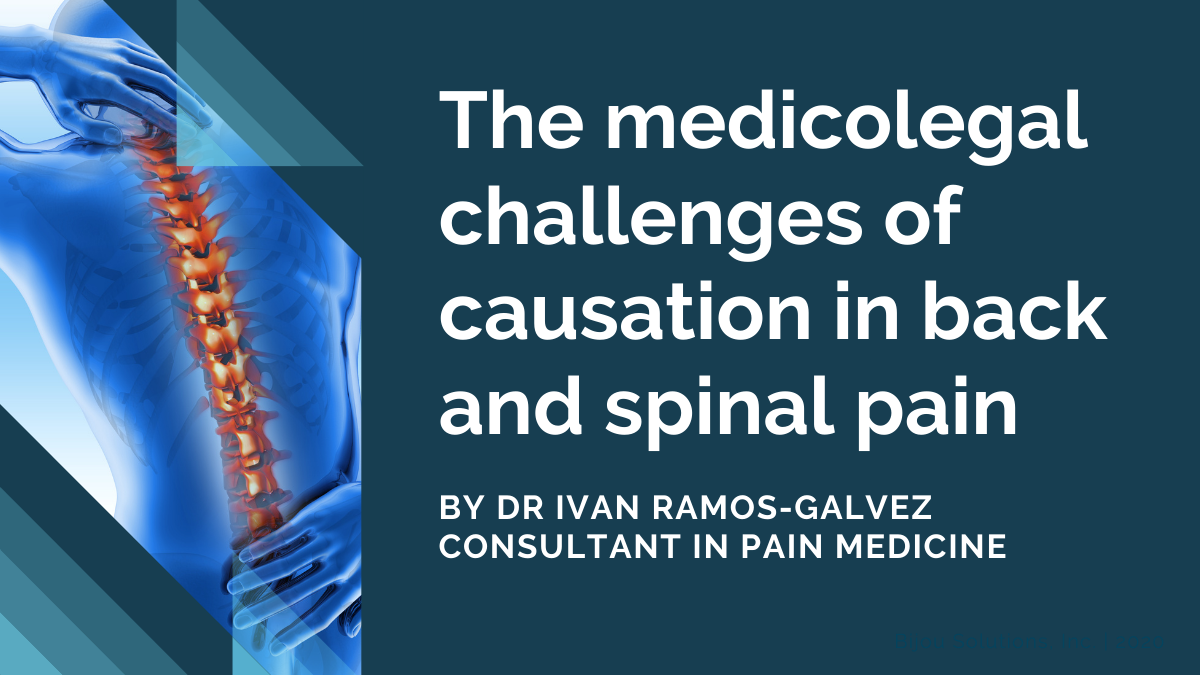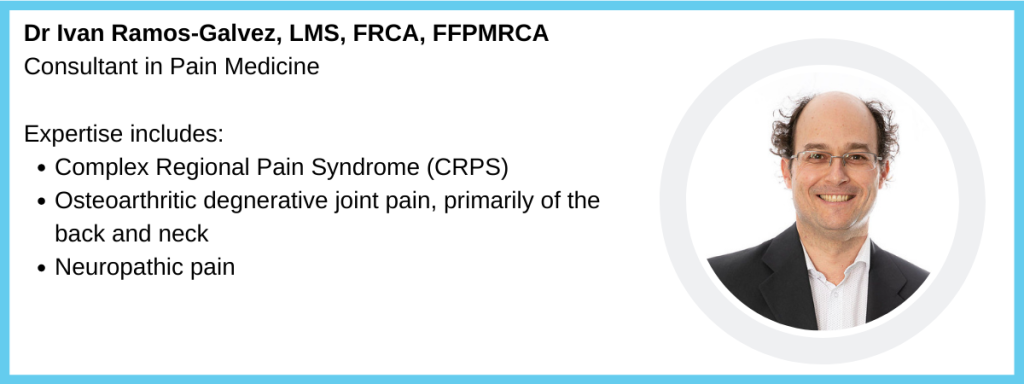The Medicolegal Challenges of Causation in Back and Spinal Pain

Not only is back pain the commonest reason for a GP consultation, it has a significant socioeconomic impact too. It has been estimated that between 60% and 80% of UK inhabitants will suffer from the condition at some point during their lifetime, and that at any one time up to one-third of adults will be experiencing it. On average, UK workers take 12 days per year off sick due to back pain. In the majority of cases, the site of pain or injury is in the lumbar region. The lumbar vertebrae take a large proportion of the weight of the upper body and so are particularly susceptible to both wear and tear and injury. While most cases resolve in a few weeks, those lasting longer than 12 weeks are classified as chronic.
Back pain is not a disease in itself, but a symptom. There are many structures around the lumbar spine and in the nervous system from which pain can arise. However, the origin of the pain is often unclear and obtaining a precise diagnosis can be difficult, even with sensitive imaging methods. Therefore, the condition is often referred to as ‘non-specific back pain’. In some patients, there is a single precipitating event or injury that gives rise to the pain but in the majority of cases, onset is gradual and cumulative and an obvious cause cannot be found. Furthermore, in many people with recurrent back pain, each episode may have a different origin.
Despite this, a number of conditions are known to be common causes of back pain. Historically, disc prolapse, also known as a ‘slipped disc’, was thought to be responsible for many cases of back pain. The inter-vertebral discs act as a protective cushion between each vertebra. As a person ages, the tough outer casing of the disc gets more brittle and can develop tears. The inner nucleus of the disc also becomes thinner and can extrude through the outer casing. If this happens, the nerves in the spinal canal can become compressed, giving rise to pain and loss of function. The condition was often treated surgically in the past, but it is now known that most slipped discs improve without intervention. Moreover, the condition probably gives rise to less than 5% of back pain caused by a specific physical issue.
Other degenerative changes to the spine may also result in back pain. The facet joints on either side of the vertebral canal are prone to ageing and it is also possible that extra bony growths may develop on the vertebrae. Both of these conditions can impinge on the spinal nerves. However, although age-related changes are often discernible on x-rays of the lumbar spine in patients over the age of 30, these do not always correlate with a history of pain in this area.
Many cases of back pain are thought to have an occupational cause and there is extensive evidence that workers in certain industries are more likely to be affected. Any job that involves heavy lifting, bending and twisting, repetition of certain movements or an uncomfortable working posture may result in a subsequent claim for back pain of occupational origin. However, the extent to which heavy lifting can actually cause degenerative changes in the back is disputed and there is also a view among some experts that manual work is beneficial for back health, as it helps to maintain strong and flexible muscles around the spine.
In cases where the onset of pain is cumulative, and the cause is believed to be occupational, the main medicolegal challenge will be determining just how much of the claimant’s condition has been caused by factors in the current job. Any compensation would need to be apportioned to reflect repetitive work or heavy lifting in previous jobs in addition to manual handling outside of work, during recreational activities, such as DIY. Consideration should also be given to any pre-existing injury or disease in the claimant’s back. If these exist, it is possible that the disputed condition would have arisen anyway, even without the occupational activities, or they may have aggravated, accelerated or exacerbated the original injury. Similar issues can arise where claimants with pre-existing back conditions are involved in traffic accidents which result in a worsening of their conditions. In all such cases, the claimant’s medical history can be crucial in deciding a claim.
Most cases of back pain do not have a serious cause and will resolve within a few weeks, but there are certain more severe conditions that give rise to pain in this area and which may be missed. These include cancerous tumours, fractures of the vertebrae and cauda equina syndrome. This latter condition occurs when a patient suffers compression to the spinal nerve roots, usually due to a prolapsed disc. Failure to identify the condition and treat it quickly can lead to serious complications, including paralysis, incontinence and impaired mobility. However, in its earliest stages, the condition can be hard to diagnose, as the only symptom may be pain in the affected area. Therefore, despite being a rare event, the occurrence of cauda equina syndrome often leads to negligence claims.
While there is no doubt that back pain is a common and significant cause of disability and time off work, the condition is so complex that identifying which of the numerous personal and occupational factors may be responsible in any one case remains a challenge.
About Dr Ramos-Galvez

To instruct Dr Ramos-Galvez on a pain case, please get in touch on info@medicolegal-partners.com or 020 7118 0650.
Further reading:
Garg, A., & Moore, J. S. (1992). Epidemiology of low-back pain in industry. Occupational Medicine (Philadelphia, Pa.), 7(4), 593–608.
Riihimäki, H. (1991). Low-back pain, its origin and risk indicators. Scandinavian Journal of Work, Environment & Health, 17(2), 81–90.
